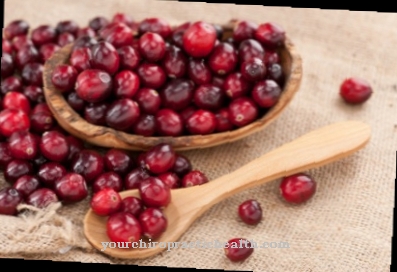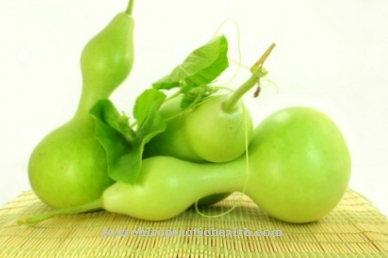The sugar beet belongs to the foxtail family (Amaranthaceae) and was bred as a special form from the common beet (beetroot). After the discovery of sugar in beets in the middle of the 18th century, the sugar content was only 2 to 6 percent. Systematic breeding has increased it to between 18 and 22 percent.
What you should know about sugar beet

The modern sugar beet with a sugar content of 18 to 22 percent has been systematically grown from the common beet (Beta vulgaris), also called beet, with an initial 2 to 6 percent sugar content since the end of the 18th century.
Other forms such as the fodder beet and the beetroot arose from the common beet. Beets are biennial plants that in the first year accumulate the greatest concentration of storage substances in a root thickening, the actual beet, which is used in the second year for the development of flowers and seeds. However, because the beet's ingredients are almost exclusively of interest for commercial use, the beets are harvested in the first autumn.
Sugar beet is the most important supplier of sugar in the moderate latitudes, with Russia, Ukraine, Germany, Poland and France as the largest European producers. In the United States, approximately 470,000 hectares are used to grow sugar beets, including genetically modified varieties.
Almost from the beginning, sugar production from sugar beet was given a political and strategic dimension by the continental barrier imposed by Napoleon in 1807 and effective until his defeat in 1813. Sugar production from sugar beet made sugar producers largely independent of cane sugar imports. The sugar that is obtained from the beet or from sugar cane consists in both cases of the chemically identical sucrose.
It is a disaccharide with two aromatic six-carbon rings. The body can break down the sugar into its energetically usable simple sugars (monosugars). Sugar production produces large amounts of beet waste, which is largely used in the form of beet pulp and molasses as animal feed.
Since the viscous brown molasses still contains around 50 to 60 percent sugar, it is not only used as an additive for animal feed, but also as a raw material in the fermentation industry and for the production of biofuel and alcohol. In the pharmaceutical industry, molasses is used as a nutrient medium for microorganisms.
Molasses is even valued as a food because, in addition to sugar, it also contains minerals and fiber and has a taste that is reminiscent of liquorice. Sugar beet syrup is also made from cooked and steamed beet pulp as a spread and to refine many sauces and dishes. The sugar beet harvest season extends from mid-September to mid-December.
Importance to health
Since sugar beet is not consumed whole, its health significance for humans depends on the different products that are made from the sugar beet.
The main product, sucrose (beet sugar), is a pure carbohydrate that the body can metabolize very quickly. All accompanying substances such as enzymes, vitamins, minerals, proteins and other secondary plant substances are removed from the sugar, so that the metabolism does not receive any help for a “healthy” metabolism of the sugar. On the positive side, consuming a little sugar in the event of a sharp drop in glucose levels can reverse the process and lead to a noticeable new energy boost. The problem is that the glucose level can rise very quickly and lead to an immediate boost in insulin production, so that a kind of rocking motion can arise between insulin production and the fluctuation in the glucose level.
Beyond the pure energy supply, an increased consumption of sugar can lead to a gradual overload of insulin production and promote insulin resistance with chronically elevated glucose levels, which carries the risk of developing type 2 diabetes. The situation is significantly different for health if sugar for sweetening food or baked goods is partially replaced by sugar beet syrup or even to a limited extent by molasses. Both products contain important minerals - sometimes in significant quantities - as well as proteins and especially vitamins of the B complex. Sugar beet syrup and molasses are absolutely free from lactose and gluten.
Ingredients & nutritional values
The sugar obtained from sugar beet consists exclusively of sucrose without any accompanying substances. Beet sugar does not contain any minerals, vitamins, enzymes, proteins or fats. The nutritional or calorific value of beet sugar is 399 kilocalories per 100 grams of sugar.
The situation is significantly different with the ingredients of sugar beet syrup and molasses. Sugar beet syrup is particularly rich in potassium (490 mg / 100 g), magnesium (96 mg / 100 g) and iron (23 mg / 100 g). The calorific value of sugar beet syrup is 30 percent lower than that of pure sugar. Sugar beet molasses has similar concentrations of ingredients and is also a source of some essential amino acids and important B vitamins.
Intolerances & allergies
Intolerance or food intolerance after consuming pure beet sugar can only relate to the sucrose from which the sugar is made. So-called sucrose intolerances are known, which is associated with insufficient activity of the enzyme sucrase isomaltase in the small intestine.
It is an enzyme that enables the catalytic breakdown of multiple sugars, including sucrose. If the deficiency in sucrase isomaltase is due to a genetic defect, it is primary or congenital sucrose intolerance. However, the disease can also be acquired through celiac disease or similar intestinal diseases.
Shopping & kitchen tips
All sugar beet-related products are industrially processed and offered in suitable containers. Regardless of the harvest campaign in autumn and late autumn, sugar in different grain sizes, as well as sugar beet syrup and molasses, which are not widely used for human consumption, can be found in grocery stores all year round.
Molasses is sometimes only offered in organic shops or in delicatessen stores. There are no special rules for storing the products to be observed. Only sugar should be kept as dry as possible because the sugar crystals are slightly hygroscopic and tend to form lumps, but this has no effect on the quality. As the realization seems to be gradually gaining ground that sugar is a kind of amputated carbohydrate without any minerals, enzymes, vitamins and amino acids, brown raw sugar or sugars colored brown with a small amount of molasses have become fashionable.
It is usually assumed that the brown sugars still contain a residue of micronutrients and are therefore healthier. Unfortunately, this assumption cannot be confirmed because even brown sugars only contain traces of minerals or other physiologically important substances.
Preparation tips
Sugar is easily soluble in water and does not require any special preparation or preparation tips, except that baking sugar should be as fine as possible to promote and accelerate its dissolution in the cake batter.
If emphasis is placed on a special taste note, some of the sugar can be replaced by the much healthier sugar beet syrup or by molasses with a piquant liquorice note during cooking and baking. The refinement of salad or meat sauces - especially for dark meat - with sugar beet syrup is particularly popular. It is also used in cakes and even when baking bread.























.jpg)



